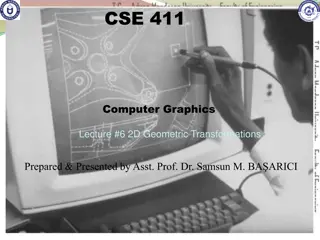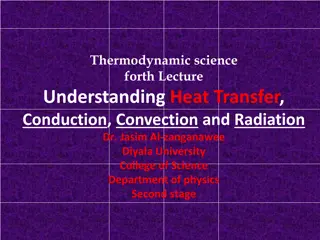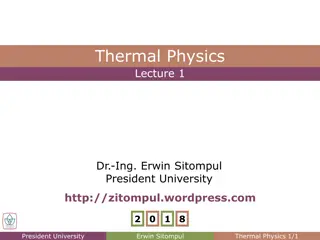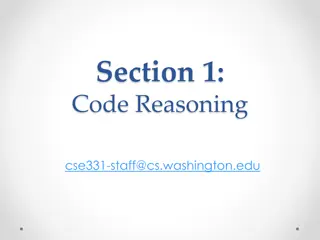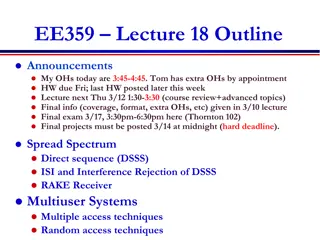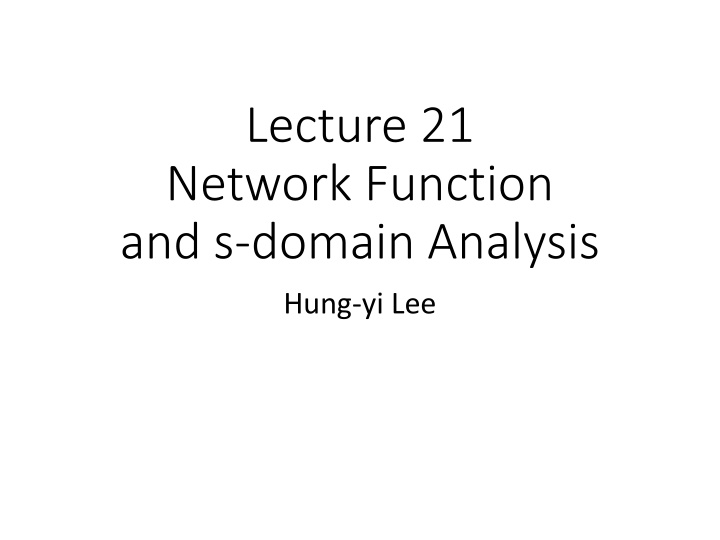
S-Domain Analysis in Network Function Lectures
Explore complex frequency analysis, impedance inductors for AC circuits, complete response concepts, and more in this lecture on network functions and S-domain analysis by Hung-yi Lee.
Download Presentation

Please find below an Image/Link to download the presentation.
The content on the website is provided AS IS for your information and personal use only. It may not be sold, licensed, or shared on other websites without obtaining consent from the author. If you encounter any issues during the download, it is possible that the publisher has removed the file from their server.
You are allowed to download the files provided on this website for personal or commercial use, subject to the condition that they are used lawfully. All files are the property of their respective owners.
The content on the website is provided AS IS for your information and personal use only. It may not be sold, licensed, or shared on other websites without obtaining consent from the author.
E N D
Presentation Transcript
Lecture 21 Network Function and s-domain Analysis Hung-yi Lee
Outline Chapter 10 (Out of the scope) Frequency (chapter 6) Complex Frequency (s- domain) Impedance (chapter 6) Generalized Impedance Network function
What are we considering? Chapter 5 and 9 Complete Response What really observed Final target Zero State Response Zero Input Response Natural Response Forced Response Chapter 6 and 7 Transient Response Steady State Response = cos A ( ) + t ( ) x t
What are we considering? Chapter 5 and 9 Complete Response What really observed Final target Zero State Response Zero Input Response Natural Response Forced Response Transient Response Steady State Response = Ae This lecture ) ( + t ( ) cos x t t
Complex Frequency In Chapter 6 Current or Voltage Sources = t x A ) ( Currents or Voltages in the circuit = t x cos A ) ( ( ) ( ) + t + cos t The same frequency Different magnitude and phase In Chapter 10 Current or Voltage Sources = t x Ae ) ( Currents or Voltages in the circuit = t x e A ) ( ( ) ( ) + t + cos t t cos t The same frequency and exponential term Different magnitude and phase You can observe the results from differential equation.
Complex Frequency s plane ( ) = + t ( ) Ae cos x t t Phasor: = A X Complex Frequency: = + j s
Complex Frequency - Inductor For AC Analysis (Chapter 6) ( ) = I L I = + ( ) I cos i t t m i L m i ( ) ( ) Lt i = + ( ) I sin v t L t L m i ( ) ( ) = + ( ) v Lt VL LI 90 = + + I cos 90 L t m i m i Impedance of inductor V Z L ( ) + LI 90 ( ) di t L = = = = j L 90 L m i = ( ) L v t L L I I L dt m i
Complex Frequency - Inductor ( ) = cos ( ) x Ae t = + t ( ) I cos i t e t L m i ( ) + t t ( ) ( ) = ( + ) + ) t t ( ) I cos I sin v t L e t L e t ) L m i m i ( ( ( ) Lt i = + + t I cos sin L e t t m i i ( ) v Lt ( ) = + + 2 2 t I cos L e t m i + 2 2 ( ) + sin t i + 2 2 ( ) di t = ( ) L v t L L dt = + + + 2 2 1 t I cos tan L e t m i
Complex Frequency - Inductor ( ) = I L I = + t ( ) I cos i t e t m i L m i ( ) = + = + + 2 2 t 2 2 1 I V LI tan v t L e L L m m i + + 1 cos tan t i Generalized Impedance of inductor + + 2 2 1 LI tan V m i = + 2 2 1 L tan L = = Z L I I L m i ( )L = = + + 2 2 L j = = + j s L j s + + 2 2 2 2 +
Generalized Impedance Generalized Impedance (Table 10.1) Generalized Impedance Element Impedance Resistor R R sL j L Inductor j / 1 C / 1 s C Capacitor s = j Special case: The circuit analysis for DC circuits can be used.
Example 10.2 s domain diagram 1 = = = = H, 1 5 , F L R C 20 90 V V 10 = + 2 4 s j = + 2 t ( ) 20 cos( 4 90 ) V v t e t 1 V 20 90 R = = = = + = + I 8 53 ( ) // Z s sL R sL 143 + ( ) 5 . 2 1 Z s sC sCR = 2 t ( ) 8 cos( 4 53 ) A i t e t = 5 . 2 143
Network Function / Transfer Function Given the phasors of two branch variables, the ratio of the two phasors is the network function/transfer function Y ( ) s = H phasors of current or voltage X Complex number The ratio depends on complex frequency ( )X s = H X : Y : Y input output
Network Function / Transfer Function Network Function/Transfer Function is not new idea I V ( ) s = Z Impedance: I V 1 I ( ) s = = Y Admittance: ( ) s V Z Y ( ) s = Impedance and admittance are special cases for network function H X
Network Function / Transfer Function Y ( ) s = Current or voltage H X Current or voltage In general, network function can have four meaning V V V ( ) s ( ) s = = 2 H H Voltage Gain Impedance I 1 2I I ( ) s = I ( ) s H = H Current Gain Admittance V 1
Example 10.5 V V L R C I sL LI R s V V 1 C sC I 1 L = = + + ( ) H s V I sL R 1 V s L sC s Polynomial of s I 1 sC ( ) s L = = = H 1 1 + + 2 1 V s LC sRC + + sL R s sC Polynomial of s
Example 10.5 V V L R C I sL LI R s V V 1 C sC V sL L = = ( ) H s 2 1 s V + + sL R sC Polynomial of s 2 s LC = + + 2 1 s LC sRC Polynomial of s
Network Function / Transfer Function ( )X s Y H = H | | | Y = ( ) Y ( ( ) s ) ( ) X ( ) s = + H || | X + 4 7 j |H(s)| is complex frequency dependent = + j s = represents 0 dc s gain dc the is ) 0 ( H Output will be very large when = t x Ae ) ( ( ) + t 4 cos 7 t
Example 10.5 Check your results by DC Gain V V L R C I sL LI R s V V 1 C sC For DC I sC Capacitor = open circuit ( ) 0 L = = ( ) H s = H1 0 1 + + V 2 1 s LC sRC s V 2 s LC Inductor = short circuit ( ) 0 L = = ( ) H s = H2 0 2 s V + + 2 1 s LC sRC
Example 10.5 Check your results by Units V V L R C I sL LI R s V V 1 C sC 1 V A V = = = C : F L : H t t R : ? : s t A V A 2 1 V A 1 A t t t t A V V A t V I V sC 2 s LC L L = = = ( ) H s = ( ) H s 1 2 + + V 2 s V 1 s LC sRC + + 2 1 s LC sRC s V 2 1 V A 1 V A 2 1 V A V 1 V A t t t t t t t A V t A V t A V t A V
Poles/Zeros General form of network function ( ) ( ) s + + + + 1 m m b s b s b s b N s = 1 1 s 0 ( ) m m H s = + + + + 1 n n a s a s a a D 1 1 0 n n The zeros is the root of N(s). If z is a zero, H(z) is zero. The poles is the root of D(s). If p is a pole, H(s) is infinite.
Poles/Zeros General form of network function + + + + 1 m m b s b s b s b = 1 1 s 0 ( ) m m H s + + + + 1 n n a s a s a a 1 1 0 n n b b b + + + + 1 m m s s s 1 0 1 m ( s )( )( ) ( ) ( 2 ) s z s z s z b b b b = = m m m m 1 2 K m p ( ) a a a a p s p s + + + + 1 n n s s s 1 0 1 n n 1 n a a a 1 n n b m zeros: z1, z2, ,zm n poles: p1, p2, ,pn = K m a n
Example 10.8 + + s 4 3 2 16 + 164 2 + s s s = ( ) 5 H s )( )( ) Find its zeros and poles ( + + 2 32 36 40 400 s s s Denominator: Numerator: + = 32 32 s p + s + 16 0 4 3 2 16 ( s )( 0 164 + s )( s s s ( z3 and z4are the two roots of s2+16s+164 s + s s 1 ) )( + = 2 36 , 6 s p p j = = 2 164 z + 2 3 ) + + = = 2 + 40 400 20 s s p p s s z 4 5 3 4 Poles: p1=-32, p2=j6, p3=-6j, p4=-20, p5=-20 Zeros: z1=0, z2=0, z3=-8+j10, z4=-8-j10
Example 10.8 + + s 4 3 2 16 + 164 2 + s s s = ( ) 5 H s )( )( ) Find its zeros and poles ( + + 2 32 36 40 400 s s s Zeros: z1=0, z2=0, z3=-8+j10, z4=-8-j10 Poles: p1=-32, p2=j6, p3=-6j, p4=-20, p5=-20 Pole and Zero Diagram Zero (O), pole (X) We can read the characteristics of the network function from this diagram For example, stability of network
Stability A network is stable when all of its poles fall within the left half of the s plane ( )X s H Y = If p = p + j pis a pole H(p)= ( cos ) Complex frequency is p ( ) t = + y Ae p If the output is p Y Y = = = X 0 No input ( ) p H The waveforms corresponding to the complex frequencies of the poles can appear without input.
Stability A network is stable when all of its poles fall within the left half of the s plane The poles are at the right plane. Appear automatically Appear automatically The poles are at the left plane. Stable Unstable
Stability A network is stable when all of its poles fall within the left half of the s plane p= 0 The poles are on the j axis. Appear automatically Marginally stable oscillator
Acknowledgement (b02)
What is Network/Transfer Function considered? Input Network Function H(s) Output Natural Response Forced Response
Natural Response It is also possible to observe natural response from network function. ( )X s Y = H
Fix 0, decrease The position of the two roots 1and 2. = 2 2 0 1, 2 =0 Undamped
Time-Domain Response of a System Versus Position of Poles (constant magnitude Oscillation) (unstable) (exponential decay) The location of the poles of a closed Loop system is shown.
Example 10.3 - Miller Effect V V in in = = Z in V V I in out 1 1 sC V in =sC ( ) V V in out V in = ( ) ( ) V V sC A in in 1 = ( ) sC + 1 A Capacitor with capacitance C(1+A)
Example 10.3 - Miller Effect V V out out = = Z out V V I out in 2 1 sC ) in V V out =sC ( V V ) V out ( A + 1 A in = ( ) ( ) V sC A in in 1 = = ( ) sC A + 1 1 +A sC A 1 Capacitor with capacitance 1 C






